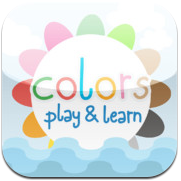Our contribution „The Modeling of Harmonious Color Combinations for improved Usability and User Experience (UX)“ to this year International Conference on Information Technology Interfaces is now online available.
Abstract:
This study compares three different models for the calculation and prediction of harmonious color combinations. Therefore a dataset of user rated color combinations was taken from a large online database. The user rating was compared to the outcome of the three models on this dataset in order to test the performance of the models. The first model based on the idea that color combinations are more pleasing the greater their difference in brightness. The second model is a slightly modified version of Ou & Lou (2006) using chromatic difference, lightness sum, lightness difference and hue effect. The last model was invented by us and is based on an experiment of Polzella & Montgomery (1993). From the outcome of their experiment we generated a lookup table for single color rating. This rating
is then used in a formula, which is able to evaluate the color harmony for color combinations up to five colors. This model also performed best in the overall comparison between the three color harmony models.
Reference: Stickel, C.; Maier, K.; Ebner, M.; Holzinger, A. (2009) The Modeling of Harmonious Color Combinations for improved Usability and User Experience (UX). – in: 31st International Conference on Information Technology Interfaces (ITI 2009) D.28 (2009), S. 323 – 328
Here you find the Draft Version.
 Im Rahmen unserer Vorlesung „Mobile Applications 2014“ ist das Farbenspiel FluidColors umgesetzt worden. Es geht darum aus drei Farbröhren die richtigen Farben zu mischen:
Im Rahmen unserer Vorlesung „Mobile Applications 2014“ ist das Farbenspiel FluidColors umgesetzt worden. Es geht darum aus drei Farbröhren die richtigen Farben zu mischen:
